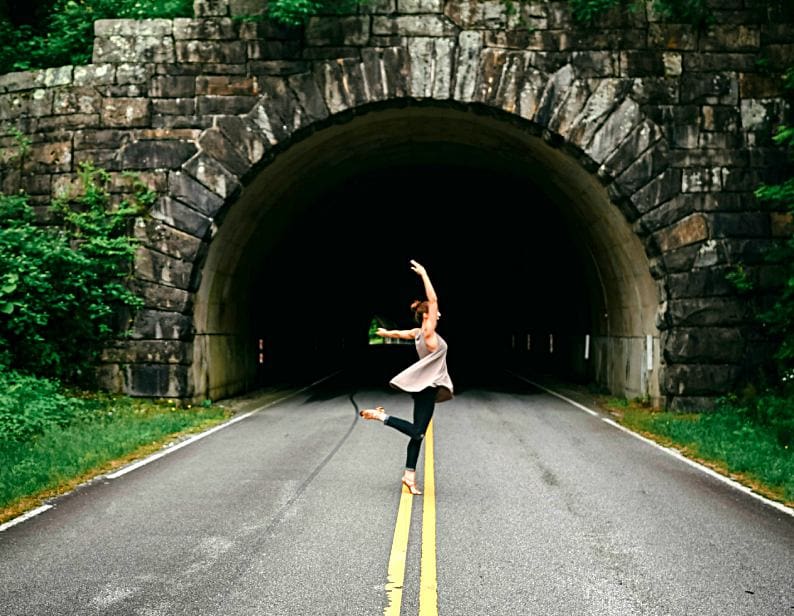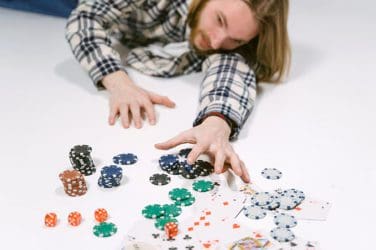words Alexa Wang
Want to know the first step to improve your dancing? To start dancing of course! Get rid of the idea that you think you’re bad at dancing. Nobody is good at something from the get-go. They got to where they are by putting in time and effort into practicing and honing their craft or talent.
If you love dancing, you’re already one step ahead. Now all you need to do is follow the ideas below to improve your dancing.
-
Going out at night
Dancing randomly according to the beat of music is one thing but dancing in coordinated steps according to a specific dance style takes practice. Here are some super-simple pro tips that you can apply in your everyday life and will help you progress during your lessons (even online).
Dance with all levels
Whether you’re a beginner, intermediate, advanced, or super Saiyan, dancing with all these levels will enable you to progress in different ways. Here’s the point: beginners who dance with intermediate/advanced will learn new passes and new guiding sensations. And we hear you say, “Yes, but they’ll get bored with me,” because they won’t! This is the time for the advanced to redouble their attention to guiding.
Take inspiration from others
That’s it; you’ve done one too many dances, and you think it’s time to take a rest. This is your chance to observe the dancer in their natural habitat, the dance floor. Over here, you’ve spotted an original new move; over there, you’ve spotted a crazy man/lady style that you can incorporate into your following dances. But it works the other way too: if you spot a poorly executed guide or a brutal fall, you’ll refrain from copying it.
Variety in your music
We all have our musical preferences: traditional, urban, etc. But dancing to new sounds and rhythms will add many strings to your dance bow. In short, you’ll understand that going to parties is the start of your new life! To gain confidence and make dance moves on your own, it’s essential to be comfortable with rhythm. Don’t hesitate to put your favorite music on loud and listen carefully, whether you’re on the way to work at home, or in the shower. The more your ears and brain get used to it, the more it will become a natural language, and your body will follow.
-
Be a good listener
Please don’t force it!
One golden rule for a good dance is not to force it. Forcing means imposing guidance on the follower rather than inviting them to follow. It can mean one of two things if you have to force a pass. Either your guiding technique needs improvement (accuracy, preparation, etc.), and you can do something about it. Or that the follower’s technique needs improvement, in which case you can do nothing about it. In both cases, you’ll note there’s no point in forcing the issue. It will only bring negative results to the dance for both partners. The leader will develop bad guiding habits, and the follower must improve their sensitivity to guidance.
Dialogue for understanding
How do we find out what the problem is with our dancing? Is it us, or is it our partner? One solution: communication. Note that this is a discussion, not an argument. The first thing to do is to question yourself before pointing fingers at the other person. Talk to the partner you’ve just danced with, and ask their opinion: “Did I guide/follow well at that moment? In addition, there are different sensitivities to guiding or following. When you dance with a partner, aim to mirror the same sensitivity, modulate your strength and reactivity to find a balance point with your partner.
The leader listens to the follower
In this last paragraph, we turn to you, the leader. You’ve often been told that the follower’s destiny is to listen and execute the moves you’ve decided on. Breaking news! It’s also your role to listen to the follower.
Do they want more room to express themselves? Do they want to execute the trick you’ve shown them in their style? Pay attention and give them the space for expression they deserve. The opposite is also true. Sometimes, followers don’t like to be left to their own devices, which can lead to awkward moments when you ask them to express themselves when they don’t feel like it.
Listening means adapting to different partners.
-
Interpreting music
Music at the heart of the dance
The three essential elements of social dancing are you, your partner, and the music. Just as you dance with your partner, you dance with the music. Although possible, dancing without listening to or interpreting the music loses its meaning. Interpreting the music will bring creativity to your dancing and shape your style.
What is interpretation?
It’s translating through dance what the music means to you, musically and emotionally. Some principles can help you do this. Take bachata, for example.
With its slow rhythm and long notes, sensual bachata lets you undulate and move your body in circles.
Traditional features fast pronounced rhythms and is often performed with footwork.
Whatever style you dance in, whether in your best pair of ballroom dance shoes or your practice ballroom shoes, try to interpret it as soon as you hear a particular element or change in the music. Breaks are easily discernible elements. The music stops or undergoes a drastic change for 4 or 8 beats, where you can do a tombé, a slow movement, or even a porté if you’re up to it.
- Eye contact
Social dancing, a dance for 2
If you’ve chosen to dance as a couple and not solo, you want to connect with others. So many messages can be conveyed with a glance. But looking someone in the eye isn’t that easy, even less so with someone you don’t know. To look and to let yourself be looked in the eyes is to be vulnerable because it allows a deeper, more emotional connection. But that’s precisely what you want to improve your dancing.
A visual discussion
Bear in mind that you’re free to engage in a visual discussion. To do this, you can look at your partner occasionally and see if they respond. If the person is comfortable with their gaze, you can feel free to look at them as much as they do. You’ll soon realize your partner’s gaze is shifty if you’re too insistent. The last thing you want to do is make them feel uncomfortable because the whole point of dancing together is to have a good time.
Your gaze also transmits extra energy to your partner and your movements.
The face accompanies the gaze
The gaze is only the first stage of eye contact. The second is your facial expression. Feel the emotion of the music, whether sad, happy, or passionate, and translate it onto your face to convey it to your partner. This will make your dance all the more beautiful than it already is. Beware of grimaces, though: they’re not very popular.
So, open your eyes and head off to new horizons.




















